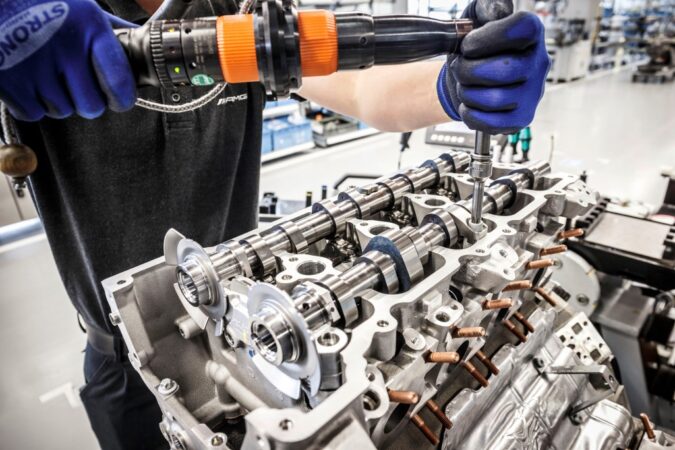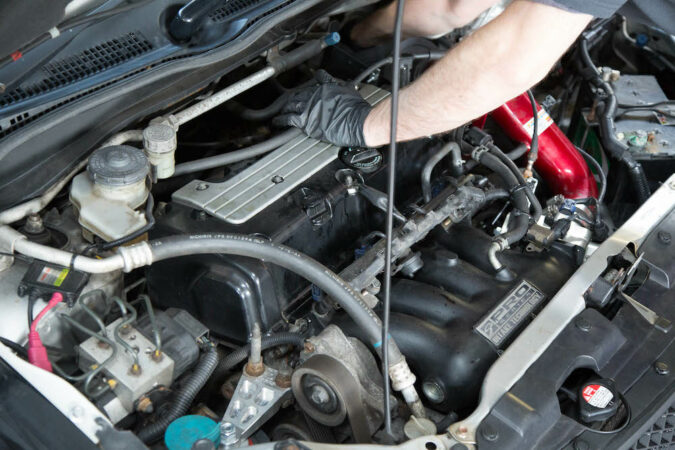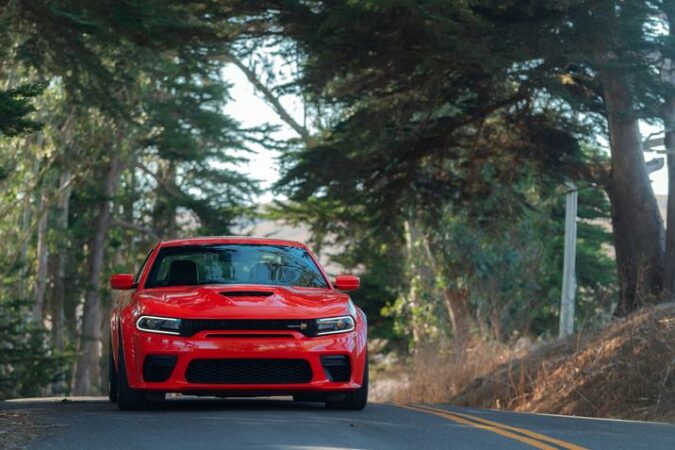Are you planning on purchasing an older Dodge or Chrysler product and you are looking for these specific Chrysler 2.7 engines? If this is the case, then you are at the right place because we are going to cover everything you need to know when it comes to 2.7 engines.
Performing proper research before you go out there and buy a vehicle is one of the best things that you can do. And let me tell you, all cars have problems. Some of them have more, while some of them to a lesser extent. And your target should be the ones that are less prone to problems.
And the most important aspects that you need to take into consideration are the engines and transmissions. The engines are of huge importance for you as a future owner because the engine is the one that propels your car forward on the road.
A bad engine will mean that the car will spend more time in the shop than on the street. And this is not good for you because this will put a hole in your pocket and you don’t want that. That’s why we are here to help you out with your trouble and teach you everything you need to know when it comes to the Chrysler 2.7 engines.
First, we are going to learn the basics of this engine and the specs. Later, we will discuss the applications of this engine and see in which vehicles you can find this engine in general. Later we will discuss the problems this engine has and its overall reliability of it. So, if you want to learn more, follow along till the end.
What Is The Chrysler 2.7 Engine?
So, what is the Chrysler 2.7 engine in general? Before we dive into complex stuff we need to familiarize ourselves and learn the basics of Chrysler 2.7 engines.
The 2.7 engine was developed by Chrysler in the ’90s and was introduced in 1998. This was the time before Daimler so this engine can be considered as a true Chrysler product since the engine was released in the same year when Daimler took over the Chrysler Corporation.
This engine was based on the bigger 3.5L Chrysler engine but there were differences in the bore and the stroke. This is understandable since it is a smaller displacement engine. The important thing to note is that most of the design was borrowed from the 3.5L V6.
The 2.7L is also known as the LH engine because it was intended to be installed in LH platform cars. More about the applications we are going to discuss a bit later in the article.
The important thing is that this engine was designed to serve mostly in front-wheel drive cars. Even though it was later adapted for rear-wheel drive applications and frankly here is the point where this engine didn’t shined.
Most of the problems with this engine came from its use in rear-wheel-drive cars. Since this is a relatively small engine considering the applications in which it was installed. But more about the problems, we are going to discuss later in the article where we are going to cover the problems in detail.
First, in the following few chapters, we are going to learn the specs of this engine and its applications. This is of huge importance for the ones that are looking for one of Chrysler 2.7 engines to purchase.
Chrysler 2.7 Engine Specs
As we learned the Chrysler 2.7 engines were introduced in 1998 and were intended for the LH platform. Now let’s move on to the specs of the 2.7 engines.
The 2.7 was a strange displacement design engine. Relatively small for a V6. Most of the V6 engines are above 3.0L of displacement.
Nevertheless, the block was at a 60-degree angle and it was a naturally aspirated engine. Meaning no turbocharging or supercharging on this application.
The cylinder bore was 3.9 inches and the stroke was 3.09 inches long. Relatively short-stroke engine. The block as well as the head were made out of aluminum. Making it extra light and a good application for lighter cars. The compression ratio was 9.7:1. Nothing significant. The compression ratio was later bumped when this engine was included in the bigger LX platform cars. Coming at a 9.9:1 compression ratio. Big improvement.
Although a V6 the redline was relatively low at 6,500 rpm. The engine head implemented a dual overhead camshaft with 4 valves per cylinder. It also incorporated a sequential fuel injection.
The official power numbers for this engine were 200hp flat. Even though some applications were weaker, rated at 178hp. The torque output from this engine was rated at 190lb-ft.
Overall, not a performance machine, this engine was intended to be used as an ordinary commuter engine. And you can also make a conclusion about that based on the applications the Chrysler 2.7 engines are part of. In the following chapter, we are going to cover precisely that and learn more about the cars in which this engine was included. So, if you want to learn more, follow along.
Chrysler 2.7 Engine Applications
Now let’s see in what products the Chrysler 2.7 engines were included. Namely, what products from the Chrysler Corporation. Because as you know, Chrysler owns a few brands, namely Dodge and Jeep.
The first car in which the 2.7 engine was installed was the Chrysler Concorde. More precisely in the second generation of the Concorde. This car was a 4 door sedan that was popular back in the day. It implemented a classic 90s American design with a sharp nose and smooth lines. The engine was used in this car until 2003 when the model was killed by Chrysler and replaced with the 300.
Another product in which the 2.7 was included was the Dodge Intrepid. This was basically the same car as the Concorde under the bonnet. But with a Dodge badge.
Another car in which the 2.7 was included was the Chrysler Sebring a 2 door coupe offered by Chrysler. The Dodge Stratus also got this engine. The Stratus was basically a 4-door sedan that used the same Sebring body.
Now let’s move to the interesting part and that is the LX cars. This platform was considerably bigger than the LH. These cars were full-size cars. But Chrysler had decided also to include this engine in these cars.
These cars are the Chrysler 300 and the Dodge Charger. Both of them were introduced in 2005 and both implemented a retro vibe to the good old days of Chrysler and were quite popular. People bought these cars like crazy and unfortunately, here much of the problems with these Chrysler 2.7 engines had started. But more on that, we are going to cover in the following chapters where we will focus on the problem aspect of this engine.
Problems That Chrysler 2.7 Engines Have
Now let’s focus on the problems of the Chrysler 2.7 engines. This is the most important thing for you to know to estimate if this engine is the right one for you as your next purchase.
Knowing these problems will make you benefit in the long run because you will be aware of what could possibly go wrong with the engine and also if you think that the problems of this engine are too much to stay away from it. After covering the problems we are going to sum things up and learn if this engine is the right option for you as a car owner.
1. Performance Issues With The 2.7 Chrysler Engine
These Chrysler 2.7 engines were used in quite a lot of products they shouldn’t be used on. Namely in the LX platform vehicles.
The LX platform was considerably larger than the one found in the LH cars. This is greatly attributed to the engine performance.
Imagine that you put a small 2.7L engine in a body that weighs a lot more than its original application.
This has put a lot of stress on these engines and made their reliability to become even worse. The heavy body of the LX cars like the Charger, Magnum, and Chrysler 300 made the 2.7 suffer even more issues.
In these cars, the engine simply isn’t happy at all and the 0 to 60 times are almost impossible to find anywhere on the web.
This is the case because nobody cared, they were slow as snails on the road and acceleration was a big problem for these cars with the 2.7 engine.
This has put a lot of stress on the engine because the chassis was extremely heavy and this long use attributed to the increased wear and tear inside of these engines.
It is the same as someone putting you in a backpack full of bricks and forcing you to carry it over the course of 100,000 miles. Not the best experience and an experience that could even cost your life. And so did on these Chargers and 300s. They were failing prematurely and developing numerous issues along the way.
The engine replacement was the only viable option for these engines. And a replacement for a bigger engine like the 5.7 HEMI or the V6 Pentastar engine which was a lot more potent. Now let’s discuss the Chrysler 2.7 engines problems.
2. Oil Sludge Buildup On The 2.7
When it comes to Chrysler 2.7 engines problems, there are not a lot of them. Only one major problem. But a big one.
The problem this engine has is with oil sludge buildup on it. This problem is actually by design. Meaning that the problem often develops on these engines and most of them are having this issue.
This problem mostly affects engines that are poorly maintained. Meaning that they haven’t seen a lot of oil changes during their lifetime.
The design of the engine allows the oil to sludge up and make damage to the internals. Whenever you skip an oil change even for a few hundred miles, you are risking engine damage to happen on this engine. The root of the cause was the oil pan size. Chrysler decided to add an oil pan of 5 quarts instead of a 6 quart. This could have saved a ton of engines in the process. The engine simply needs more oil to survive and is basically choking with these 5 quarts of oil that are in it.
The best case would be to flush the oil preventive every 4,000 miles or so to be safe in the long run and not affect the signs of oil sludge. More on the signs of oil sludge in the Chrysler 2.7 engines we are going to discuss in the following chapter where we will elaborate on this problem in depth.
What is good to know, is that whenever the engine starts to collect sludge, you can just thrash it away. There is no way around this. But more on this we will cover next.
Signs Of Oil Sludge Buildup
So, we learned that the oil sludge buildup is a major issue on Chrysler 2.7 engines. What are the signs of this issue, how can know you that your engine has oil sludge in it? There are a couple of symptoms that you will experience and we are going to elaborate on them in depth in the following paragraphs.
The first sign of oil sludge buildup is the loss of oil pressure. There will not be enough oil pressure buildup to make the engine run well.
The second signs that go along are the bad fuel economy and the poor acceleration. In worst cases, the engine would simply stall and you will have trouble starting it again because of a lack of oil pressure and lack of compression. There are the symptoms that are most often when the engine is dying.
More extreme symptoms are when the rods are starting to knock. This is likely caused by worn bearings and this problem will soon cause a complete engine failure when the engine will simply break and stop working with puddles of oil under the car.
And frankly, you don’t want to end up in a situation like this with these Chrysler 2.7 engines to happen, you want to get a good and reliable engine.
If the problem is detected on time, you could escape by replacing the rod bearings as well as some other tweaks. But if this problem is detected when the engine started knocking, there is no way out than replacing the engine with a new one. A new engine could simply cost you more than $3,000.
3. Timing Chain Tensioner Failure
Another problem in the Chrysler 2.7 engines is the timing chain tensioner failure. This timing chain tensioner as the name implies is holding tension on the chain so the chain does not jump and cause damage.
Unfortunately, these tensioners are often made out of low-quality plastic and can wear and break. Meaning that when they break, the chain gets loose.
So, when the chain is loose it could easily jump and cause major damage inside of the engine. The pistons and valves will collide and this will result in the need to replace some valves in the best-case scenario.
Or to replace the whole engine in the worst case. The more the engine continues to work in situations like this, there is the high chance that the damage will get worse and worse resulting in the engine locking up eventually. This engine will unfortunately is not reparable and you will have to replace it with a new engine from the Chrysler 2.7 engines family.
4. Water Pump Leaking In The Crank Case
Another common problem with the Chrysler 2.7 engines is the problem with the water pump gasket. These water pump gaskets tend to fail on these engines and will cause the engine eventually to dilute the oil with coolant and create sludge.
This will speed up the oil sludge creation and will make sure that the engine dies quicker than previously anticipated.
So, when you are having an engine like this is always track the condition of the oil and make sure that this oil is not diluted with coolant and it does not have oil sludge inside of the engine.
Any sort of sludge will make the engine wear at an incredible pace and sooner or later the engine will start knocking and failing. So, that is all when it comes to the Chrysler 2.7 engines problems. Now let’s learn more about its overall reliability and whether they are a good purchase.
2.7L Overall Reliability Score
The overall reliability of the Chrysler 2.7 engines is really poor. Meaning that these engines are not worth your attention.
With over 3,000 engine failures that are reported and who knows how many that weren’t makes this engine really an engine that you don’t want as an engine of your future vehicle. The failure rate of these engines is something incredible and rarely any engine has so many issues because of some simple things like a water pump gasket, bad oil capacity, and its use in a wrong application.
Even though, 2.7 engines above 2005 are slightly more reliable than the earlier models of this engine. Some of these problems were patched and these models became more reliable.
Later this engine was ditched for a 3.6L V6. A much better engine for the size of the LX cars and these cars should have been installed with this engine in the first place. But should you purchase one of the Chrysler 2.7 engines? Well, that’s what we are going to cover next.
Should You Purchase A Chrysler 2.7 Engine
So, should you purchase a car with one of the Chrysler 2.7 engines? The answer is no if you don’t want to get yourself stuck with a slow car that has the potential to fail at any given moment.
Still, if you get a car from the older 90’s cars like the Stratus or even the Dodge Avenger will not make your regret the decision since they are a lot lighter chassis cars that run well with the 2.7.
If you want to get an LX car like the 300, Charger, or Magnum, you will only face problems. The problems with the engine are the least of the concern because with this engine in that chassis you will not be able to pass a tractor on the road.
Lacking the ability to overtake is also dangerous for you as a driver. You will get your life in danger because your car will struggle to overtake. So, get a decent size engine. And in the following chapter, we are going to cover the alternatives to the Chrysler 2.7 engines.
Alternatives To The 2.7L Chrysler Engines
Now let’s discuss the alternatives to the Chrysler 2.7 engines. If you have an older Chrysler or Dodge with this engine, you might want to take a look at cars that have the 3.2L and 3.5L V6 engines. These engines are far more reliable than the 2.7.
They don’t have that oil sludge buildup problem on them and you will have pretty much happy ownership. Also, these engines do not require fabrication to get adjusted on the LH platform, they are just bolt-on.
If you are looking for an LX car, your best bet would be to look for a car that has the 5.7L V8 HEMI in it. This engine is extremely reliable and also a good fit for this chassis. The car will not feel slow at all and you will enjoy driving in this vehicle. That’s our two cents on this.
Facts about Chrysler’s 2.7-liter V6 engine
- Francois Castaing believed that an advanced, lightweight, efficient engine was necessary to secure Chrysler’s reputation, which led to the creation of the 2.7-liter V6 engine, released in 1998.
- The engine had a new design using aluminum blocks and heads, dual overhead cams, 24 valves, and other features to ensure efficiency.
- The engine had a smaller bore and stroke than the 2-liter four-cylinder “Neon” engine, with cylinder spacing and deck height made smaller than those of the 3.2/3.5 engines.
- The 2.7-liter engine’s timing chain drove the water pump and had an interference design.
- The power output per liter was the highest of any Chrysler V-engine, with a compression ratio of 9.7:1 at launch, 200 hp at 5,800 rpm, and 190 lb-ft at 4,850 rpm.
- The engine had coil on plug ignition, with no spark plug cables, and sequential multiple point fuel injection.
- A Magnum version of the engine used a variable intake system, which varied the length of the intake manifold tubes to create a small but useful supercharging effect at different engine speeds.
- The 2.7-liter engine had a sludge issue that caused engine failure, which was solved by changing the water pump gasket.
- The engine was modified for the LX series in 2004 to produce more low-speed torque at launch and during mid-range operation, with a new active dual-plenum intake manifold tuned for improved low-speed torque.
- The 2.7-liter engine was phased out in favor of the Pentastar V6 starting with model-year 2011.
Conclusion To Chrysler 2.7 Engines
In this article, we learned quite a bit when it comes to the Chrysler 2.7 engines. We first learned what this engine is all about. Then we covered the specs of this engine as well as the 2.7 applications. To know in which cars you can find this engine. As you can tell this engine is found in older LH and LX platform vehicles produced in the late ’90s and early ’00s.
Then we learned the problems of the 2.7L engine. We learned that this engine has big issues with oil sludge as well as problems with the oil and coolant mixing together because of a bad water pump gasket and also problems with the timing chain tensioners.
Lastly, we learned the Chrysler 2.7 engines reliability and we learned if this engine is a good purchase or not.










I purchased a 06 300 with the 2.7 lit that was well maintained and no sludge. you can’t hear the engine, it’s that quiet and they made many improvements for the LX platforms. lack of maintenance is the only issue after 05 with a water pump gasket upgrade that removed the separator plate (which most mechanics wouldn’t replace by accident). I drove said car to Florida from Pennsylvania and he was very good in mid to high-speed torque due to the improved intake made for the LX cars. key word maintenance, and 3.5’s had some sludge issues as well in the early years of development till about 05. where they made improvements on those as well
I’m one of the lucky ones? I have 162,000 trouble free miles on my 2.7 engine in my 2004 Sebring Conv. Oil has been changed every 3,750 miles or one year whichever came first. Water pump and timing chain tensioner were replaced at 148,000. Alternator was replaced at 116,000 and oil pan gasket has been replaced twice.